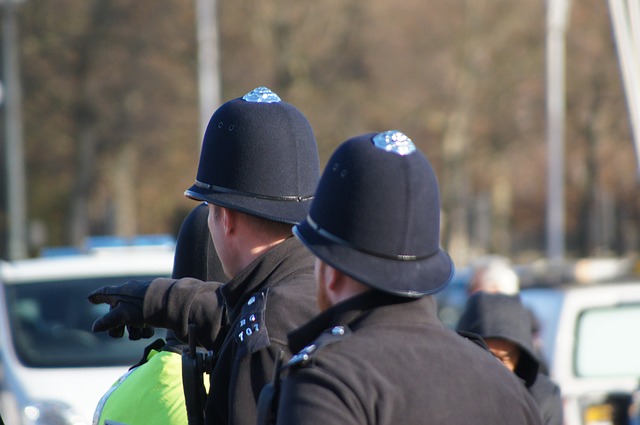Emergency services
Buildings and other features of the built environment such as built infrastructure can present hazardous situations during their construction, operation, special events, maintenance, refurbishment and decommissioning.
It may be appropriate in some of these conditions to develop an emergency plan so that quick and effective action can be taken in the event of an emergency situation arising to ease the severity of that situation and to limit the consequences. An emergency plan establishes agreed, recorded and rehearsed strategies, allowing an effective response. For more information see: Emergency plan.
Amongst other things, it is important to identify on-site and off-site emergency resources that can be called upon if necessary, and estimated response times, based upon distances from fire stations, hospitals, and so on.
On site emergency resources might include:
- Detection and alarm systems.
- Fire extinguishers.
- Spills containment equipment.
- First aid equipment.
- First aiders and other medical or emergency response staff.
Off-site emergency resources will generally include the emergency services. The four main emergency services can be contacted by phoning Emergency Control Centres (ECC) on 999:
- Ambulance service.
- Coastguard.
- Fire and rescue service.
- Police service.
Additional emergency services may also be contacted through Emergency Control Centres on 999:
- Bomb disposal.
- Cave rescue.
- Lifeboat.
- Lowland rescue.
- Mine rescue.
- Moorland search and rescue service.
- Mountain rescue.
- Quicksand search and rescue service.
The 999 number was first introduced in 1937 in central London following a review of a fire on Wimpole Street in 1935 which killed 5 women. It was introduced in other major cities after the Second World War, and by 1976 it covered the whole of the UK. Today the 999 system handles more than half a million calls a week (ref). On receiving a call, the operator will ask ‘Which service do you require”.
In 2009, UK mobile phone networks introduced Emergency Call Roaming so that an emergency call will attempt to use another network if the users network has no signal.
101 can be phoned to contact the Police in non-emergency situations and 111 to contact the NHS in non-life-threatening medical situations. In 1993, 112 was introduced to provide a single number for contacting the emergency services throughout Europe.
As well as emergency response, the emergency services may also:
- Work with local authorities and other agencies such as building control bodies and the Health and Safety Executive (HSE) in relation to issues such as building regulations approvals, licensing, event planning and so on.
- Develop emergency plans.
- Carry out site visits and inspections and advise on safety.
- Carry out investigations following emergencies.
- Undertake enforcement action.
- Undertake promotional and educational activities.
[edit] Related articles on Designing Buildings Wiki
- Alarms.
- Demolition.
- Emergency lighting.
- Emergency plan.
- Emergency signage.
- Evacuating vulnerable and dependent people from buildings in an emergency FB 52
- Fire and rescue service.
- Fire authority.
- Fire marshal.
- Fire.
- First aid.
- Health and safety.
- Health and Safety Executive.
- Health.
- Insurance.
- Licensing.
- Live event production.
Featured articles and news
CIOB and CORBON combine forces
To elevate professional standards in Nigeria’s construction industry.
Amendment to the GB Energy Bill welcomed by ECA
Move prevents nationally-owned energy company from investing in solar panels produced by modern slavery.
Gregor Harvie argues that AI is state-sanctioned theft of IP.
Heat pumps, vehicle chargers and heating appliances must be sold with smart functionality.
Experimental AI housing target help for councils
Experimental AI could help councils meet housing targets by digitising records.
New-style degrees set for reformed ARB accreditation
Following the ARB Tomorrow's Architects competency outcomes for Architects.
BSRIA Occupant Wellbeing survey BOW
Occupant satisfaction and wellbeing tool inc. physical environment, indoor facilities, functionality and accessibility.
Preserving, waterproofing and decorating buildings.
Many resources for visitors aswell as new features for members.
Using technology to empower communities
The Community data platform; capturing the DNA of a place and fostering participation, for better design.
Heat pump and wind turbine sound calculations for PDRs
MCS publish updated sound calculation standards for permitted development installations.
Homes England creates largest housing-led site in the North
Successful, 34 hectare land acquisition with the residential allocation now completed.
Scottish apprenticeship training proposals
General support although better accountability and transparency is sought.
The history of building regulations
A story of belated action in response to crisis.
Moisture, fire safety and emerging trends in living walls
How wet is your wall?
Current policy explained and newly published consultation by the UK and Welsh Governments.
British architecture 1919–39. Book review.
Conservation of listed prefabs in Moseley.
Energy industry calls for urgent reform.


























